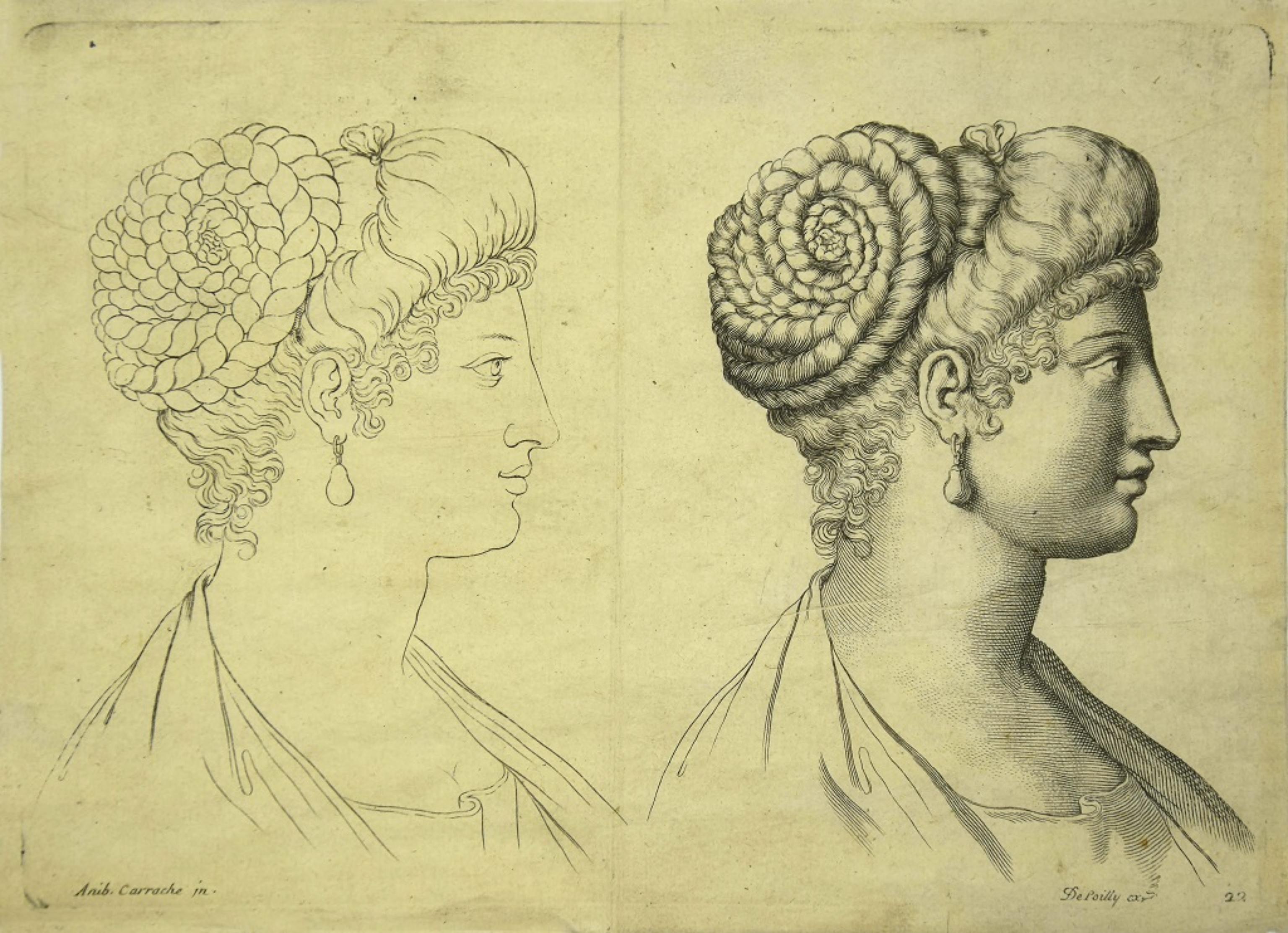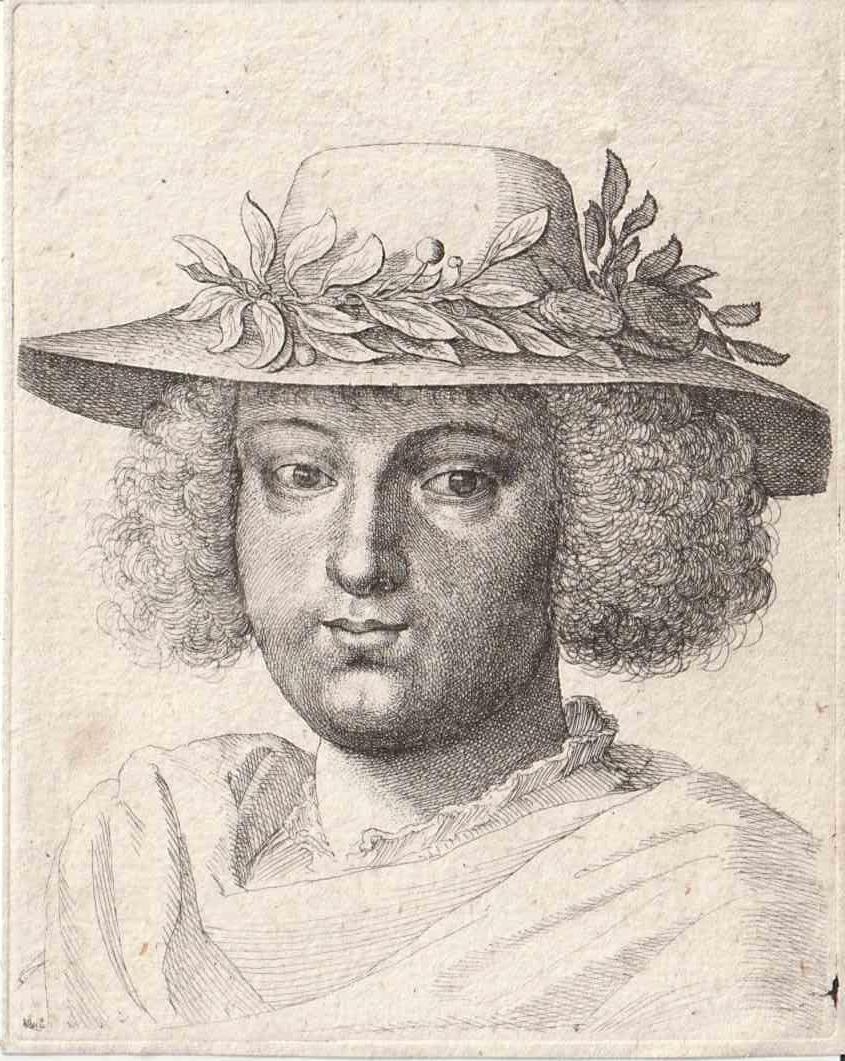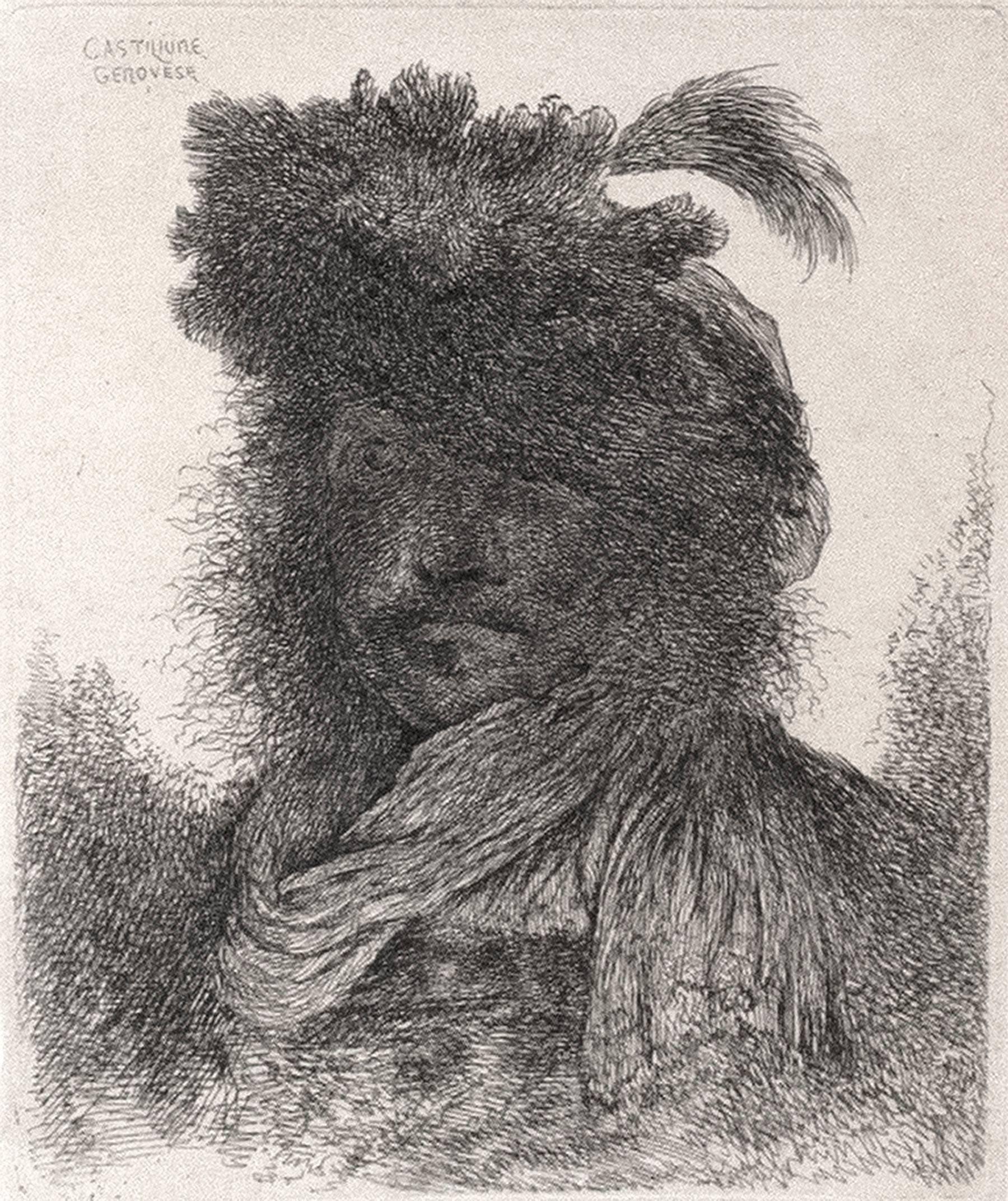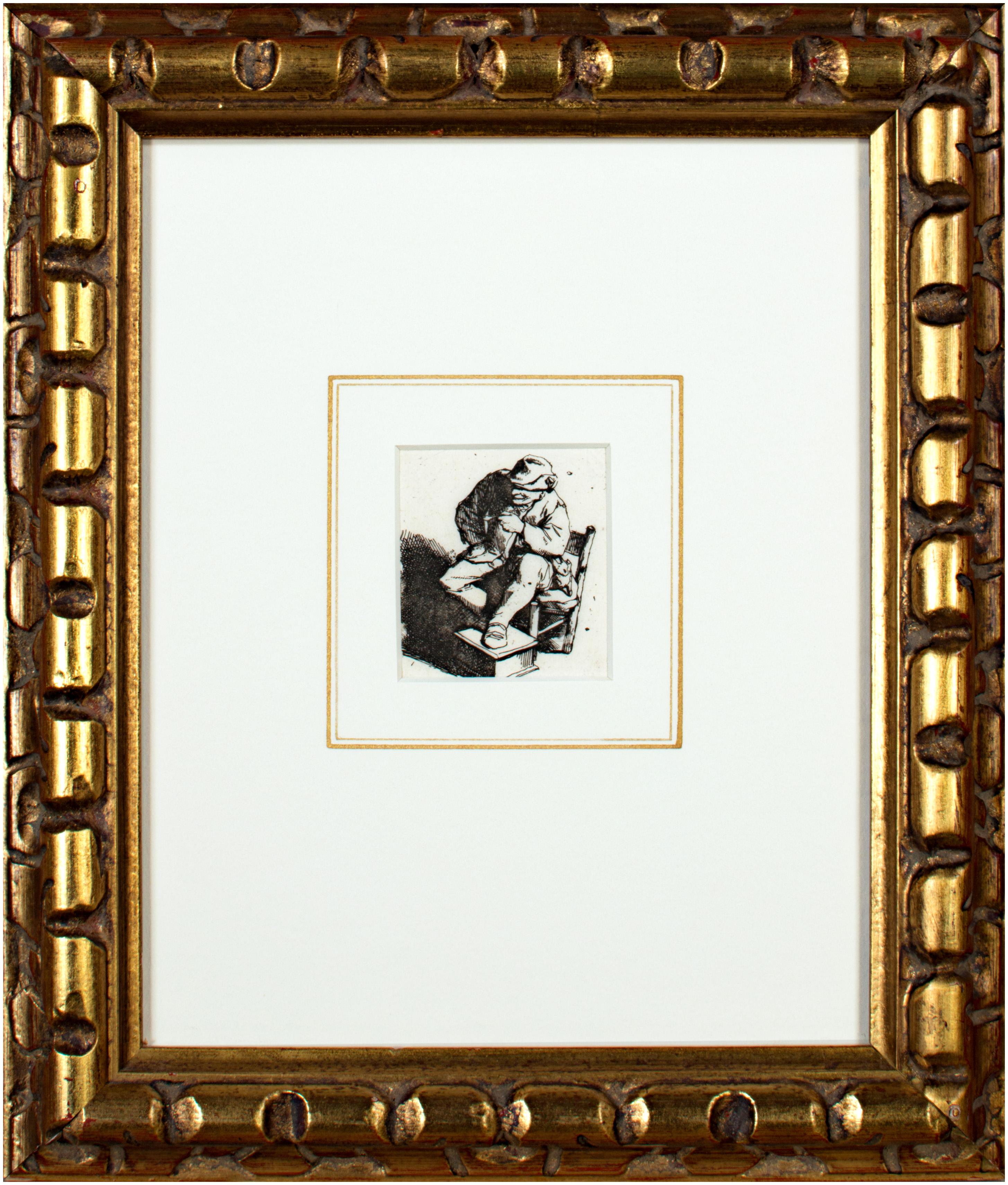Items Similar to Athena Goddess, Ancient Roman Statue - Etching on Paper - 18th Century
Want more images or videos?
Request additional images or videos from the seller
1 of 5
Ludovico BoilyAthena Goddess, Ancient Roman Statue - Etching on Paper - 18th Century18th Century
18th Century
About the Item
Athena Goddess, Ancient Roman Statue, from the series "Antiquities of Herculaneum", is an original etching on paper realized by Ludovico Boily in the 18th century.
Signed on the plate, on the lower right.
Good conditions with slight folding.
The etching belongs to the print suite “Antiquities of Herculaneum Exposed” (original title: “Le Antichità di Ercolano Esposte”), an eight-volume volume of engravings of the finds from the excavation of the ruins of Herculaneum in the Kingdom of Naples (now Campania, Italy).
It was published between 1757 and 1792 by the Regia Stamperia, and copies were delivered to selected recipients across Europe.
Despite the title, the Antiquity of Herculaneum shows objects from all the excavations undertaken by the Bourbons in the Gulf of Naples. These include Pompeii, Stabia and two sites of Herculaneum: Resina and Portici.
The Bourbon King Carlo appointed fifteen scholars creating a new “Herculaneum Academy” to study the artifacts and publish the results of the archaeological excavations of the sites.
The engravings are of high quality and the accompanying text shows a large scholarship.
They were realized by 25 prominent artists involved by the King to prepare drawings and engravings on the finds, among which we can find Giovanni Elia Morghen, Carlo Nolli, Luigi Vanvitelli and Giovanni Battista Casanova.
The “Antiquities” was designed more to amaze readers with the quality of the objects in the collection of the King of Naples than to be used in research., following and increasing the interest of 18th century society for the classical culture and Art in particular.
Through the exaltation of the classical concept of proportions and harmony, the book was of inspiration to the neoclassical movement in Europe, giving artists and decorators access to a huge shop of Hellenistic motifs.
Ref.:
National Gallery (Washington), Mark J. Millard Architectural, IV (2000), no. 1;
L. Garcia y Garcia, Nova bibliotheca pompeiana (2 v., 1998);
Royal Institute of British Architects, British Architectural Library ... Early printed books, 1 (1994), no. 112.
U. Pannuti, 'Incisori e disegnatori della Stamperia Reale di Napoli nel secolo XVIII: la pubblicazione delle Antichità di Ercolano', in Xenia antiqua, 9 (2000), p. 151-178;
V. Trombetta, 'L'edizione de Le Antichità di Ercolano esposte' in Rendiconti dell'Accademia di Archeologia, lettere e belle arti di Napoli , 59 (1984), p.151-172.
- Creator:
- Creation Year:18th Century
- Dimensions:Height: 19.3 in (49 cm)Width: 13.39 in (34 cm)Depth: 0.04 in (1 mm)
- Medium:
- Movement & Style:
- Period:
- Framing:Framing Options Available
- Condition:Insurance may be requested by customers as additional service, contact us for more information.
- Gallery Location:Roma, IT
- Reference Number:
About the Seller
4.9
Platinum Seller
These expertly vetted sellers are 1stDibs' most experienced sellers and are rated highest by our customers.
1stDibs seller since 2017
6,806 sales on 1stDibs
Typical response time: 3 hours
- ShippingRetrieving quote...Ships From: Monaco, Monaco
- Return PolicyA return for this item may be initiated within 14 days of delivery.
More From This SellerView All
- Female Portraits - Etching After Annibale Carracci - 17th CenturyBy Annibale CarracciLocated in Roma, ITFemale Portraits is an original artwork realized after Annibale Carracci (Bologna, 1560 - Roma, 1609). Etching on paper. Good conditions. The print is signed "Anib. Carrache in." in the bottom left corner while "De Poilly...Category
17th Century Old Masters Portrait Prints
MaterialsPaper, Etching
- Hermes, Ancient Roman Statue - Original Etching on Paper - 18th CenturyBy Ludovico BoilyLocated in Roma, ITHermes, Ancient Roman Statue, from the series "Antiquities of Herculaneum", is an original etching on paper realized by Ludovico Boily in the 18th century. Signed on the plate, on t...Category
18th Century Old Masters Figurative Prints
MaterialsEtching, Paper
- Ancient Roman Statue - Original Etching on Paper - 18th CenturyLocated in Roma, ITAncient Roman Statue, from the series "Antiquities of Herculaneum", is an original etching on paper realized by F. Campana in the 18th century. Signed on the plate, on the lower rig...Category
18th Century Old Masters Figurative Prints
MaterialsEtching, Paper
- Ancient Roman Fresco Herculaneum - Etching by Carlo Oratij - 18th CenturyLocated in Roma, ITAncient Roman Fresco from the series "Antiquities of Herculaneum", is an etching on paper realized by Carlo Oratij in the 18th Century. Signed on the plate. Good conditions. The e...Category
Late 18th Century Old Masters Figurative Prints
MaterialsEtching
- Antiquities of Herculaneum Exposed- Original Etching - 18th CenturyLocated in Roma, ITAntiquities of Herculaneum Exposed, original etching from the end of the 18th century, made by Various Old Masters. Good condition...Category
Late 18th Century Old Masters Figurative Prints
MaterialsEtching
- Ancient Roman Relief - Original Etching - 18th CenturyLocated in Roma, ITAncient Roman Relief, from the series "Antiquities of Herculaneum", is an original etching on paper realized by an anonymous Artista in the 18th century. ...Category
Late 18th Century Old Masters Figurative Prints
MaterialsEtching
You May Also Like
- The Plank Bridge – Landschap met een bruggetje van plankenBy Anthonie WaterlooLocated in Middletown, NYEtching on thin cream laid paper with a partial "M" or "W" watermark, 5 x 5 15/16 inches (126 x 150 mm), thread margins. Inscribed in the plate in the upper-right: “Antoni Waterlo fe...Category
17th Century Old Masters Landscape Prints
MaterialsLaid Paper, Etching
- Study of a HeadBy Wenceslaus HollarLocated in Middletown, NYBy Wenceslaus Hollar, after Jan Van Bylert (Biler) Etching on cream laid paper, 3 7/16 x 2 3/4 inches (87 x 70 mm), thread margins. Lacking the inscription in the plate; "Felix Bil...Category
17th Century Old Masters Portrait Prints
MaterialsEtching, Laid Paper
- Bearded Man with Shadowed Face, Wearing a Scarf and a Plumed Hat, (3rd state)By Giovanni Benedetto CastiglioneLocated in Chicago, ILBearded Man with Shadowed Face, Wearing a Scarf and a Plumed Hat, (3rd state), 1645-50 Etching on laid paper 152 x 184 mm.; 6 x 7 1/4 inches References: Bellini 45 Bartsch 52 Note...Category
17th Century Old Masters Figurative Prints
MaterialsLaid Paper, Etching
- 'The Smoker (Le Fumeur)' original etching by Cornelis-Pietersz BegaBy Cornelis BegaLocated in Milwaukee, WI'The Smoker (Le Fumeur)' is an original etching by the celebrated Dutch painter and printmaker Cornelis-Pietersz Bega. It presents a genre scene of the type Bega was best known for: Bega's principal subjects were genre representations of taverns, domestic interiors and villages. He depicted nursing mothers, prostitutes, drunks, gamblers and fools such as quack doctors and alchemists. In this case, he shows a man seated on a chair with his foot on a flat stool and holding a smoking pipe. For Bega, this representation was more of a caricature than it was an image of a specific person, and such genre scenes would have held allegorical and symbolic meaning for the seventeenth-century viewer. During the seventeenth century, the Dutch of all levels of society consumed tobacco and alcohol, and these were an important part of the Dutch economy and a major source of wealth. At the same time, however, moralists and ministers sought to curb intoxication: they openly described drinking and smoking as sinful, immoral, and a general threat to one’s reputation. This paradox is reflected in prints such as this, which inherently carry the national pride of the Dutch economy alongside a moral warning in a print that could be just as easily consumed and collected. 2.5 x 2.25 inches, print 12.38 x 10.38 inches, frame Framed to conservation standards using archival materials including 100 percent rag matting and mounting materials. Housed in a gold finish Spanish-style wood moulding. Overall good and stable condition; margins cut to plate; some wrinkling in the corners from previous mounting; housed in a new custom frame. Cornelis Bega was born into prosperous circumstances. His mother, Maria Cornelis, inherited half the estate (gold, silver, paintings, drawings and prints) and all of the red chalk drawings of her father, Cornelis Cornelisz van Haarlem, a renowned Mannerist artist. Bega's father was Pieter Jansz Begijn (d 1648), a gold and silversmith. Like other family members, Bega was probably Catholic. Houbraken's claim that Bega studied with Adriaen van Ostade is likely to be correct; this was probably before 24 April 1653, when Bega joined Vincent Laurentsz. van der Vinne in Frankfurt for a journey through Germany, Switzerland and France. Bega had returned to Haarlem by 1 September 1654, at which time he joined the Guild of St Luke; he was already a competent draughtsman, as indicated by his first extant dated work, Interior with a Nursing Mother (1652; Frankfurt am Main, Städel. Kstinst.), and by a remarkable double portrait (Amsterdam, Rijksmuseum) drawn by him and Leendert van der Cooghen in 1654. Bega painted, drew, etched and made counterproofs in a wide variety of materials on different types of small-scale supports. He may have been the first Dutch artist to make monotypes, but this remains controversial. Approximately 160 paintings, 80 drawings and six monotypes by Bega have been catalogued, as well as around 34 etchings. Bega's principal subjects were genre representations of taverns, domestic interiors and villages. He depicted nursing mothers, prostitutes, drunks, smokers, gamblers and fools such as quack doctors and alchemists. Less common subjects include the ridiculed or pestered woman, as in Two Figures and Mother with a Spirits Bottle (c. 1662; Gouda, Stedel, Museum Catharina Gasthuis) and The Inn (etching), as well as witty satires on traditional scenes of middle-class music-makers, such as the Music Lesson (1663; Paris, Petit Palace). Bega's early paintings, such as the Weaver's Family (c. 1652; St Petersburg, Hermitage), are freely executed, dark and coarse, recalling the many-figured peasant subjects of van Ostade. Between c. 1660 and 1664 he began to paint genre scenes with fewer figures, which are finely articulated, colourful and psychologically expressive, for example Two Men Singing (1662; Dublin, N.G.). His exquisite, late fijnschilderen ('fine painting') manner, evident in The Alchemist (1663; Malibu, Getty Museum), compares well with that of Gerrit Dou. As a draughtsman Bega is noted for his single-figure studies, executed mainly in black and white chalk on blue paper or red chalk on white paper. None of the studies, which were drawn naer het leven (from life), seem to relate to a painting or etching. Bega traded drawings or shared models with other artists of the Haarlem school, including van der Cooghen, Gerrit Berckheyde, Dirck Helmbreker and Cornelis Visscher. These artists drew chalk figure studies in a very similar style, characterised by regular and precise parallel shading and well-defined forms; their drawings, especially those of Bega and Berckheyde, have been frequently confused. Unlike the realistic figure studies, Bega's etchings depict interiors with figures or single figures in the manner of van Ostade; the compositions, often with masterful chiaroscuro effects, reflect most closely the paintings of the 1650s. Bega is likely to have remained in Haarlem, where he paid dues to the Guild in 1661. He probably died from the plague; fees for his expensive funeral at St. Bavo's were paid on 30 August 1664. Among the artists he influenced were Thomas Wijck, Jan Steen, Richard Brakenburg (1650-1702) and Cornelis Dusart. Painters such as R. Oostrzaen ( fl ?1656) and Jacob Toorenvliet...Category
17th Century Old Masters Figurative Prints
MaterialsEtching, Paper
- Four original etchings of women from 'Aula Veneris' series by Wenceslaus HollarBy Wenceslaus HollarLocated in Milwaukee, WIPresented here as a group are four original etchings of women in European national dress from the master printmaker Wenceslaus Hollar's series "Aula V...Category
17th Century Old Masters Figurative Prints
MaterialsPaper, Etching
- 'Near Mrs. Teshmakers, Edmonton' original etching by John Thomas SmithBy John Thomas SmithLocated in Milwaukee, WIThe present is one of the many prints John Thomas Smith produced of English cottages and vernacular architecture. This example, a view of a cottage in Edmonton, is closely related to...Category
1790s Old Masters Landscape Prints
MaterialsEtching, Paper





